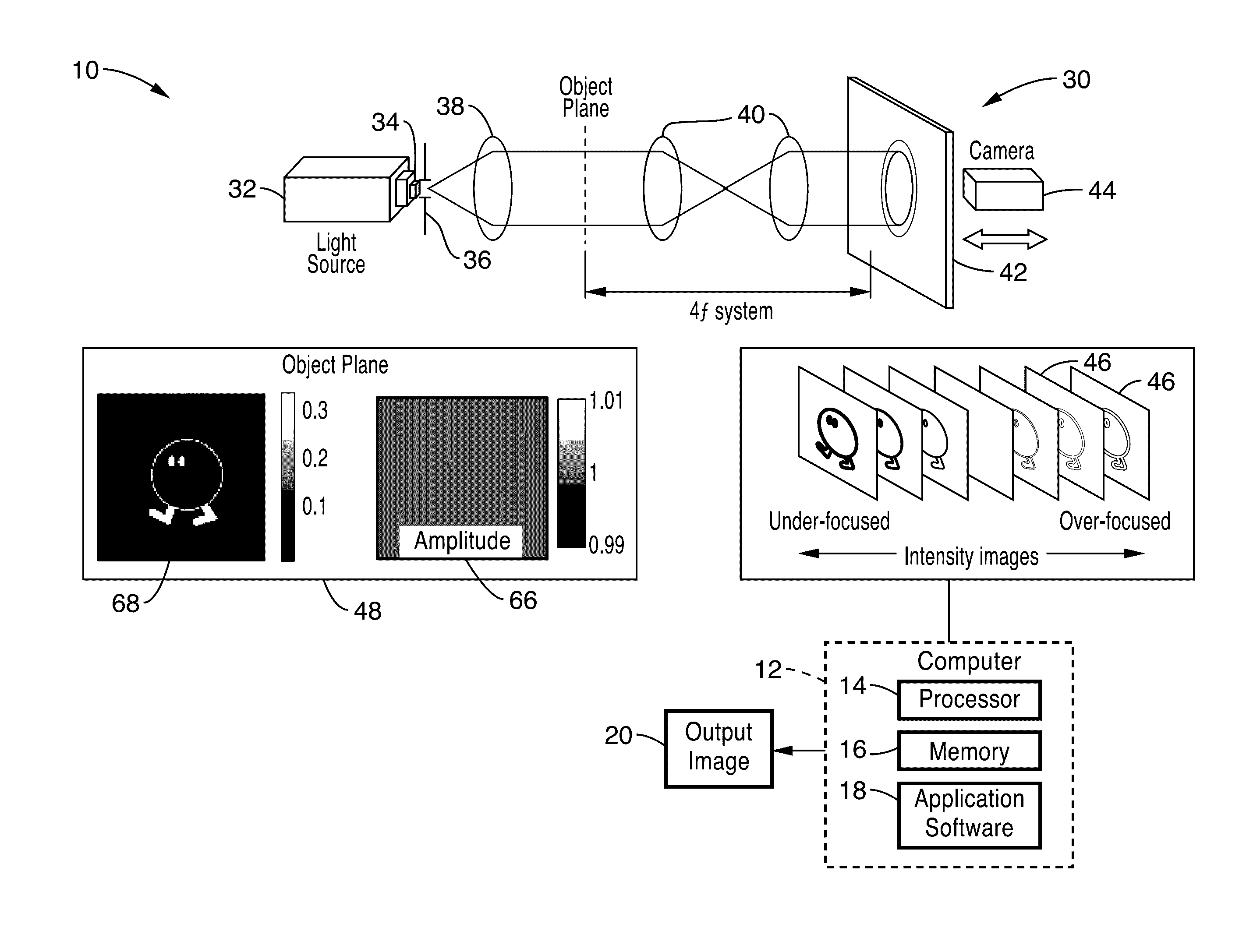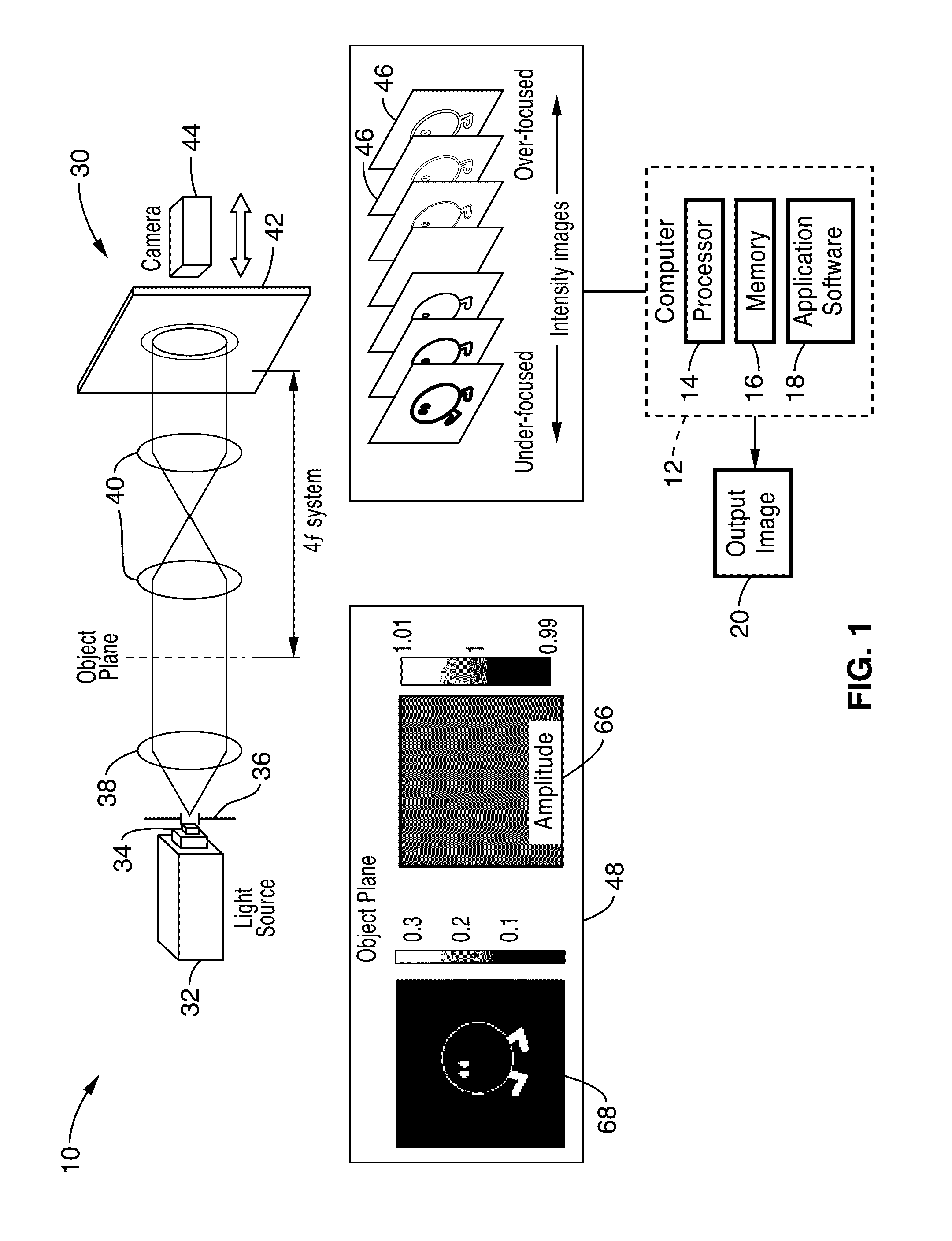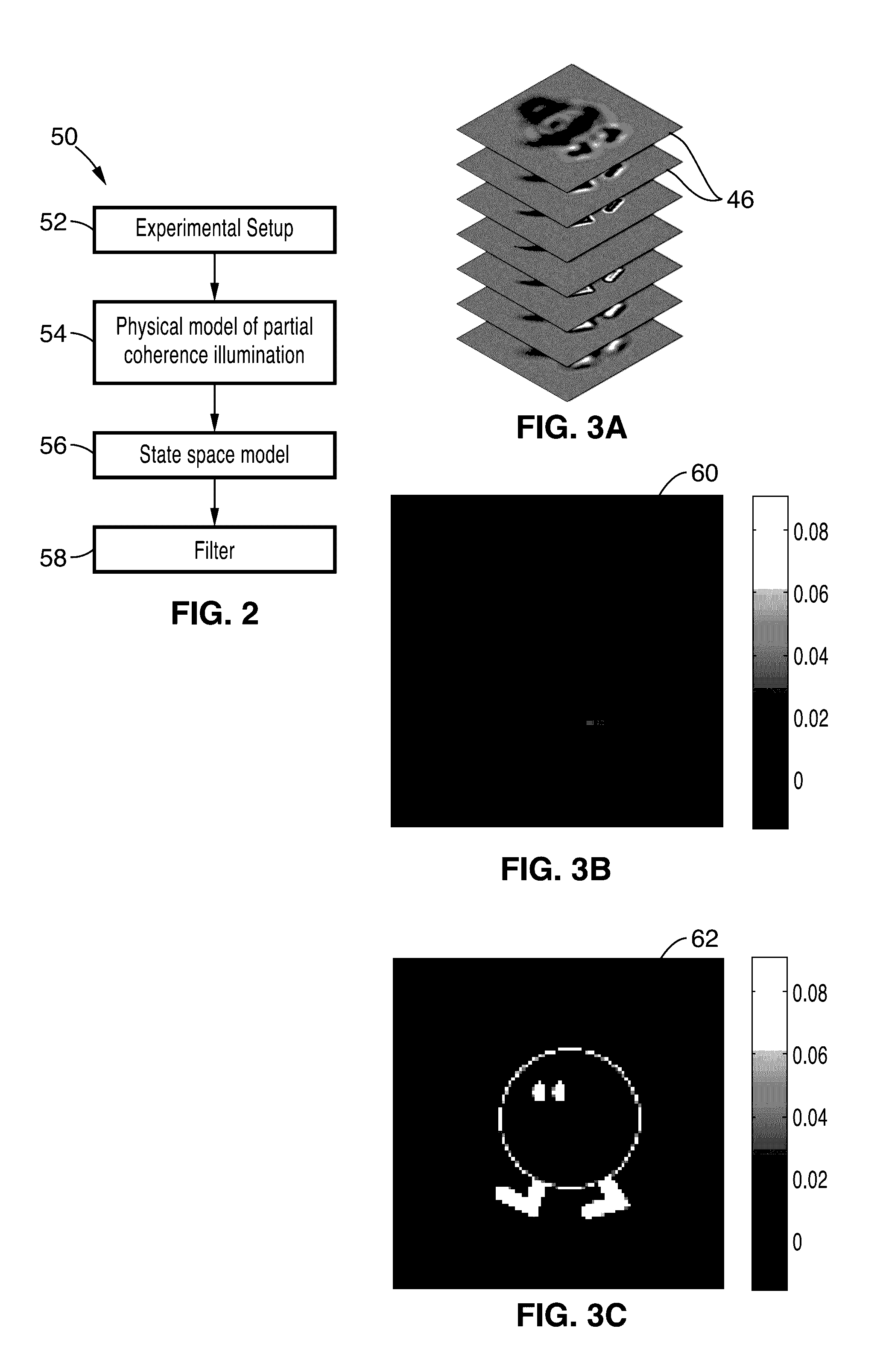Partially coherent phase recovery
a phase recovery and partially coherent technology, applied in image enhancement, image analysis, instruments, etc., can solve the problems of gauss-newton or similar methods using second order derivatives (hessian) that are generally difficult to implement, and achieve the effects of reducing computational complexity, fast, efficient, and robust to nois
- Summary
- Abstract
- Description
- Claims
- Application Information
AI Technical Summary
Benefits of technology
Problems solved by technology
Method used
Image
Examples
Embodiment Construction
1. System Configuration
[0036]Referring to FIG. 1 a schematic diagram of the image processing system 10 of the present invention is shown implemented in a Köhler system configuration with a 4f microscope 30.
[0037]When an object is illuminated by a coherent source, the optical field at z is described with A(x, y, z)=|A(x, y, z)|eiφ(x, y, z), where |A(x, y, z)| is the amplitude, and φ(x, y, z) is the phase. Free space wave propagation is modeled with wave propagation Eq. 1:
∂A(x,y,z)∂z=iλ4π∇⊥2A(x,y,z),Eq.1
where λ is the wavelength of the illumination, and ∇⊥ is the gradient operator in the lateral (x, y) dimensions.
[0038]To include partially coherent illumination into the Kalman filter model of the present description, an incoherent extended source is assumed in the Köhler system configuration. The intensity I(x, y, z) defocused by z can be written as a convolution between the intensity from coherent illumination |A(x, y, z)|2 and a scaled source intensity distribution S(x, y):
I(x,y,z)=...
PUM
 Login to View More
Login to View More Abstract
Description
Claims
Application Information
 Login to View More
Login to View More - R&D
- Intellectual Property
- Life Sciences
- Materials
- Tech Scout
- Unparalleled Data Quality
- Higher Quality Content
- 60% Fewer Hallucinations
Browse by: Latest US Patents, China's latest patents, Technical Efficacy Thesaurus, Application Domain, Technology Topic, Popular Technical Reports.
© 2025 PatSnap. All rights reserved.Legal|Privacy policy|Modern Slavery Act Transparency Statement|Sitemap|About US| Contact US: help@patsnap.com



